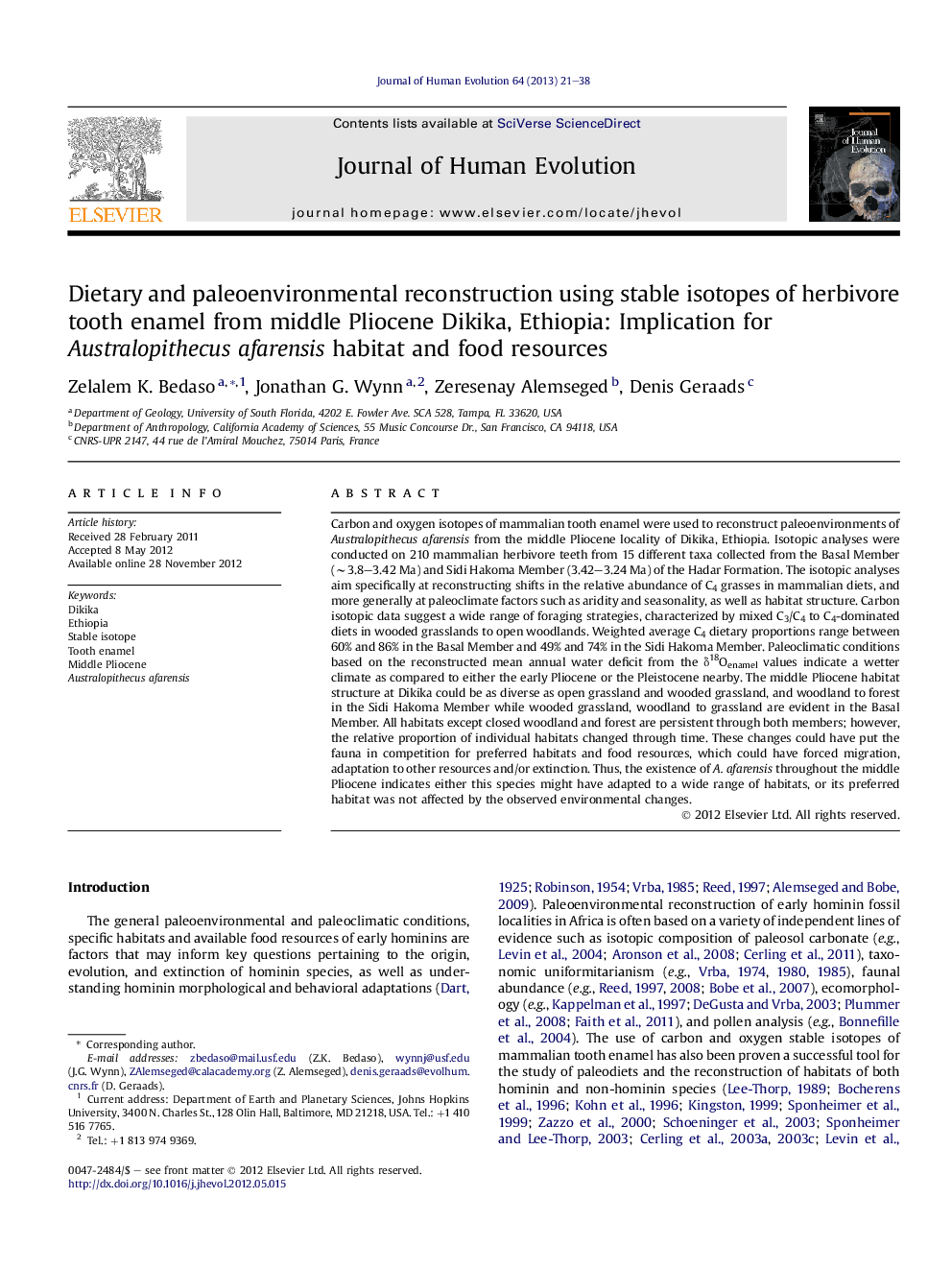| کد مقاله | کد نشریه | سال انتشار | مقاله انگلیسی | نسخه تمام متن |
|---|---|---|---|---|
| 4556299 | 1329469 | 2013 | 18 صفحه PDF | دانلود رایگان |

Carbon and oxygen isotopes of mammalian tooth enamel were used to reconstruct paleoenvironments of Australopithecus afarensis from the middle Pliocene locality of Dikika, Ethiopia. Isotopic analyses were conducted on 210 mammalian herbivore teeth from 15 different taxa collected from the Basal Member (∼3.8–3.42 Ma) and Sidi Hakoma Member (3.42–3.24 Ma) of the Hadar Formation. The isotopic analyses aim specifically at reconstructing shifts in the relative abundance of C4 grasses in mammalian diets, and more generally at paleoclimate factors such as aridity and seasonality, as well as habitat structure. Carbon isotopic data suggest a wide range of foraging strategies, characterized by mixed C3/C4 to C4-dominated diets in wooded grasslands to open woodlands. Weighted average C4 dietary proportions range between 60% and 86% in the Basal Member and 49% and 74% in the Sidi Hakoma Member. Paleoclimatic conditions based on the reconstructed mean annual water deficit from the δ18Oenamel values indicate a wetter climate as compared to either the early Pliocene or the Pleistocene nearby. The middle Pliocene habitat structure at Dikika could be as diverse as open grassland and wooded grassland, and woodland to forest in the Sidi Hakoma Member while wooded grassland, woodland to grassland are evident in the Basal Member. All habitats except closed woodland and forest are persistent through both members; however, the relative proportion of individual habitats changed through time. These changes could have put the fauna in competition for preferred habitats and food resources, which could have forced migration, adaptation to other resources and/or extinction. Thus, the existence of A. afarensis throughout the middle Pliocene indicates either this species might have adapted to a wide range of habitats, or its preferred habitat was not affected by the observed environmental changes.
Journal: Journal of Human Evolution - Volume 64, Issue 1, January 2013, Pages 21–38